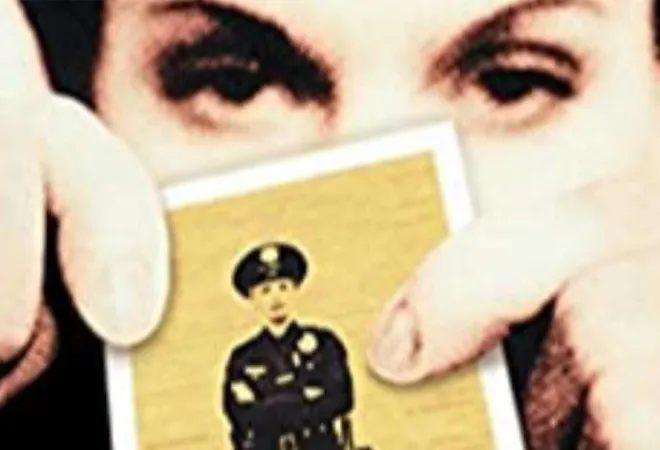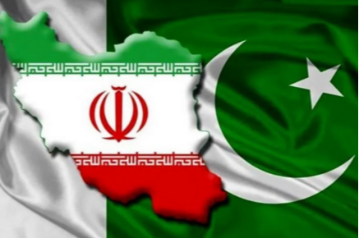
India’s progressive lexicon of a ‘women-led development model’, aims to leverage leadership spaces for women across sectors. However, as the Leader’s Summit of the G20 inches closer, the dialogue on the glaring gender disparity in policing has failed to garner adequate attention. Despite global calls to increase the representation of women in policing, the progress remains regrettably slow. According to data released by the
Bureau of Police Research & Development, (BPRD), women constitute about
10.49 percent of India’s police force, falling much behind their global counterparts. The United Kingdom has over
34.9 percent women in terms of its overall workforce, while the United States (US) has
12.6 percent female law enforcement officers. There were 217,026 women in India’s police personnel as of 1 January 2021, which was a meagre
0.71 percent increase since 2019. This increase remained largely restricted to the lower rungs of the hierarchy with women police officers making up only
8.2 percent at the national level. The picture looks grim with the
India Justice Report stating that until 2020, despite a 33 percent quota for women in certain states, none of them has yet reached their targets. It further observes that it will take the police force an estimated
33 years to meet its desired target as well.
Despite global calls to increase the representation of women in policing, the progress remains regrettably slow.
Prevalence of multi-tiered bias in policing
According to a
report by
INTERPOL, United Nations Office on Drugs and Crime (
UNODC), and
UN Women, while women contribute to more effective law enforcement, they face many barriers across all facets of police operations. Despite constitutional safeguards, women across the world working in law enforcement agencies continue to face discrimination and exist as a
marginalised minority. Its traditionally male-dominated bastion still stands mainly because of its inherent tendency to reinforce societal gender norms. In India, hegemonic masculinity is particularly evident in the designations assigned to senior female officers. While women in Global North are often addressed with their designations at par with their male counterparts, in many countries women have to contend with official nomenclature that erodes them of their identity. So a senior female officer in India is more likely to be addressed as Sir and or nowadays as Madam Sir, while commands during parades are organically tailor-made to address male superiors such as “
Shrimaan nirikshan ke liye teyaar”, loosely translated as ‘Sir, we are ready for inspection’ irrespective of gender. In official public interactions, junior personnel are reportedly addressed as ‘
apa’, meaning sister in
Bangladesh while similar rank-holding men are referred to as ‘sir’.
While sexist humour, body shaming, etc., are normalised within the system, women are also viewed as liabilities,
especially in physical confrontations. Training periods in policing heavily tend to invest in the physical prowess of cadets and shy away from developing interpersonal skills. Police academies often assign male recruits to have a
higher bar for physical fitness which creates a notion of superiority. Young female personnel are then likely to enter the job with a preordained masculine sub-culture with little recognition of the positive assets that they could bring to their workplace.
While women in Global North are often addressed with their designations at par with their male counterparts, in many countries women have to contend with official nomenclature that erodes them of their identity.
There is also ample evidence from existing research—
Burke and Mikkelsen;
DeHaas, Timmerman and Hoing;
Lonsway, Paynich, and Hall—that point out that female personnel tend to face more incidents of harassment than their male colleagues. A
study conducted in Rajasthan in 2017 on a sample size of 100 police women revealed that nearly 26 percent of police women were sexually harassed by their subordinates and during their professional interactions in public life. This works as a multi-tiered method of subjugation through
humour, verbal abuse, innuendos that demand sexual favours,
skewed fitness criticism,
bullying and forced
quid pro quo harassment such as offering job-related perks in exchange for sexual favours. It has been
reported that urban women are likely to apply for high-positioned jobs through the Indian Civil Services rather than applying for junior-level posts. But are these the only factors that are keeping women away from joining this profession? A major stumbling block to start with is the paucity of empirical research on the determining factors that hinder women from pursuing this career path, making the future of representational policing even more problematic.
The glass cliff phenomenon
Academics have long argued that organisational culture within policing is not gender-neutral and often tends to reward and glorify masculinity. Termed as “
police subculture”, this orientation often prevents women to be accepted by their peers as equals and are deliberately sidelined from high-profile positions despite their skills, leading to
devalued social identities. Evidence from various studies
(Brown and Heidensohn; Segrave, and
Jackson) have indicated that at the turn of the 20thcentury, women were slowly being pigeonholed into “specialist departments” such as juvenile crime, sexual assault, or administrative posts while fighting crime was reserved for men.
Research has repeatedly suggested that women across the agency are more likely to turn down promotions more frequently than their male counterparts because of care responsibilities, motherhood, and longer travel distance to their workplace. Women police officers also often end up paying a
‘marriage tax’, if they wed within the police services often discarding better career prospects to accommodate the aspirations of their spouses. The disparity in leadership positions permeates from the lower rungs to senior levels among women police officers. Until today, India’s top investigating agencies such as the Central Bureau of Investigation (
CBI) and the
Research Analysis Wing have until today failed to appoint a woman chief. Since the establishment of the
Federal Bureau of Investigation (FBI) in 1908, none of its
20 directors (including those in an acting capacity) have been women. According to
CNN, the New York Police Department
(NYPD) in its 176-years history finally appointed a woman in 2021. The existing glass cliff phenomenon also operates in a subconscious way in policing which tend to promote women into leadership positions under the cloak of progressive reforms in terms of crises or when the risks of failure run high.
Research has repeatedly suggested that women across the agency are more likely to turn down promotions more frequently than their male counterparts because of care responsibilities, motherhood, and longer travel distance to their workplace.
Looking ahead to an equitable policing system
- Studies on gender and police to a large extent have not been able to escape syllogism perhaps because they narrowed their focus down to women’s particular concerns in policing but little on men’s perception of gender dynamics in their workplace. Improving empirical data collection methods for analysis that examine gender intersectionality and existing policy interventions can go a long way in improving women’s role in policing.
- Research on reforming the concept of ‘gendered time’ in police careers on how time is differentially valued and utilised through the provision of part-time and flexible hours has the potential to drive a significant mindset change. Exploring measures that extend parental leave by allowing men on the force could also meet parent expectations between genders. Only scanty literature is available on the entry, retention, and job satisfaction of women in policing. A study noted that there is a need for adequate research on factors that influence and motivate members of the workforce to attract viable candidates to the policing profession. One way is to start early. School curriculum exposure that explores careers in policing including career options in forensics, criminal journalism, and cybercrimes can be great enablers.
- Departments in the police should engage in outreach programmes that involve young people by encouraging role models to interact as guest speakers and via college educational fairs. Marketing this profession for a future pipeline of leaders where the emphasis is not limited to fitness and strength but also on nonpartisan investigation, conflict resolution, and problem-solving as important tools to send out a strong message of diversity in the system.
- Meaningful interactions with the community such as establishing a Citizenship Police Academy present in the US replicates and condenses recruiting training regimes to offer a nuanced understanding of the required skill sets and abilities could go a long way in changing career perceptions among aspiring cadets.
- Mentorship programmes that motivate aspirational female students designed with a gendered lens could alternatively help to bridge inequalities that impede the entry and achievements of women in policing.
- Police departments across countries can also create an all-women senior police leadership roster for senior posts on similar lines as established by the UN Police to create opportunities for meritorious women officers.
- While some police stations around the globe have daycare facilities, women still struggle to avail of postnatal maternity breaks in the service, with limited access to nursing rooms or maternity uniforms.
A mere change in raising the female workforce will be meaningless if it is not reformative. Countries such as
Australia and Canada have proved that it is possible to recruit and retain women by transforming the mission of their departments to be more inclusive.
Arundhatie Biswas is a Senior Fellow at the Observer Research Foundation
The author would like to acknowledge Dr. Meeran Chadha Borwankar, retired IPS and former Director General, BPRD for her invaluable inputs
The views expressed above belong to the author(s). ORF research and analyses now available on Telegram! Click here to access our curated content — blogs, longforms and interviews.



 India’s progressive lexicon of a ‘women-led development model’, aims to leverage leadership spaces for women across sectors. However, as the Leader’s Summit of the G20 inches closer, the dialogue on the glaring gender disparity in policing has failed to garner adequate attention. Despite global calls to increase the representation of women in policing, the progress remains regrettably slow. According to data released by the
India’s progressive lexicon of a ‘women-led development model’, aims to leverage leadership spaces for women across sectors. However, as the Leader’s Summit of the G20 inches closer, the dialogue on the glaring gender disparity in policing has failed to garner adequate attention. Despite global calls to increase the representation of women in policing, the progress remains regrettably slow. According to data released by the  PREV
PREV


